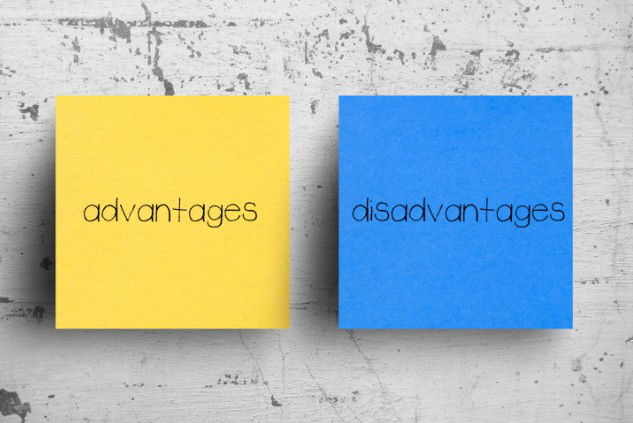Flexible Life Interest Trust (FLIT)

Last verified: 14th November 2025 (England & Wales)
Imagine being able to protect your home and investments for the whole family without leaving your spouse exposed or locking everything into a rigid plan that might not fit in ten years.
A Flexible Life Interest Trust (FLIT) is designed for precisely that. It provides a surviving spouse with security and access. At the same time, a team of trustees quietly manages the family wealth in the background, allowing it to adapt to remarriage, rising house prices, tax changes, or the needs of children at different times.
A FLIT is often described as a modern family trust for couples who want strong protection now with very flexible options later.
Quick-read summary
A Flexible Life Interest Trust (FLIT):
- It is a type of Will trust that combines income security for a spouse with discretionary flexibility for family beneficiaries.
- Blends the strengths of a protective property trust (asset security) and a discretionary trust (adaptability), giving you protection and flexibility in one structure.
- Allows a surviving spouse or partner (the “life tenant”) to remain in the family home or receive income for life, while trustees can use discretion to support the wider family.
- Lets trustees respond to real life – remarriage, care needs, debt problems, or children needing deposits – without rewriting the Will every time something changes.
- It is usually created in mirror Wills so that on each death, the trust can be used consistently for the family.
A FLIT balances today’s security with tomorrow’s protection, keeping your wishes alive even when life does not go to plan.
Practical checklist
Use this as a sense-check. These simple steps help the trust work smoothly in practice:
- Decide whether your main goal is protection for a spouse, inheritance for children, or both.
- Choose trustees who can act fairly between generations and make decisions when circumstances change.
- Prepare a clear Letter of Wishes to guide future decisions (for example, helping children onto the property ladder, education costs, or future partners).
- Check property ownership: where a home is to be included, it should usually be owned as tenants in common (50–50) rather than beneficial joint tenants so that each Will can control its own share.
- Confirm both spouses’ nil-rate bands and residence rules are understood and can be used efficiently.
- Plan for registration: the trust typically needs to be registered with HMRC’s Trust Registration Service (TRS) after the first death.
- Review your Wills and Letters of Wishes at least every five years, or sooner if family or tax circumstances change.
How it works and what to consider (advantages and limits)
A FLIT combines a life-interest trust (income and occupation for life) with discretionary powers (capital use when needed).
Typically:
- On the first death, all or part of the estate is placed into the FLIT.
- The surviving spouse or partner receives income and usually the right to live in the home for life (or as the trust dictates / as chosen when drafting).
- The trustees may advance capital or loans to the spouse and, where appropriate, to children or other beneficiaries.
- On the survivor’s death, the trust converts typically into a discretionary trust for the next generation, so trustees can continue managing and distributing capital over time.
The FLIT does not magically remove tax or care-fee rules, but it gives trustees room to plan around them.

Key advantages in principle:
- Immediate security for the surviving spouse, with a right to occupy the home or receive income.
- Enhanced protection from new spouses, creditors, or care-fee assessments; while there are no guarantees, putting wealth inside a properly drafted trust can reduce some of these risks.
- Option for trustees to advance or loan capital when needed, rather than forcing a rigid one-off inheritance on each death.
- Ability to adjust investments or, in some cases, convert into another trust if the law changes and a different shape becomes more suitable.
- Smooth transfer to children or other ultimate beneficiaries after the second death, supervised by trustees.
Limitations:
- For inheritance tax (IHT), the life tenant is treated as inheriting the trust assets, so those assets form part of their taxable estate.
- The Residence Nil-Rate Band (RNRB) is not available if the home stays in the discretionary trust long-term; trustees may need to appoint the home or proceeds to direct descendants within two years to preserve RNRB.
- There is more administration and reporting than with a straightforward Will.
- Trustees must understand their duties and balance immediate needs with long-term family aims.
- FLITs are usually most efficient for married couples or civil partners. For long-term unmarried couples, other structures may be more suitable unless marriage is expected.
In most cases, a FLIT does not create tax advantages on its own; its value lies in the control and planning opportunities it provides trustees between the first and second death.
Tenants in common versus joint ownership
For a FLIT (or any Will trust involving property), it is essential to understand how the home is owned:
- Beneficial joint tenants: both partners own the whole property together. Upon death, the other automatically inherits the entire property, regardless of what the Will states.
- Tenants in common (50–50): each owns a defined share. Their Will controls what happens to that share, such as placing it into a FLIT or other trust.
In most FLIT cases, we convert the ownership to tenants in common (50–50) so that each Will can direct its own share into trust if appropriate.
Cases – Andy and Beth
These examples show how a FLIT can turn potential crises into manageable choices. Names are examples only.
Scenario 1 – No planning
Andy and Beth own their home jointly. Andy dies, and everything passes outright to Beth. Years later, Beth remarries Charles and fails to update her Will. On her death, Charles inherits everything and leaves it to his own children. Andy’s children receive nothing.
Scenario 2 – The FLIT in action
Before Andy’s death, they sever joint ownership and include a FLIT in their Wills. After Andy’s death, Beth struggles financially in the early years. Andy’s co-trustee, Dave, remembers that Andy wanted Beth to avoid hardship. After discussion, the trustees agree to release £10,000 per year for a period of six years, allowing Beth to manage comfortably. This practical flexibility is precisely what Andy intended.
Scenario 3 – Bankruptcy risk
If Beth had faced bankruptcy, Andy’s half of the home would sit inside the FLIT and be legally separate. In many cases, creditors could not access that share, so Andy’s portion stays reserved for his children.
Scenario 4 – Remarriage and tax planning
When Beth later marries Charles, the trustees review the trust. The property has risen in value. Acting under Andy’s Letter of Wishes, they advance £30,000 each to the children for weddings and deposits. Eight years later, those gifts are outside Beth’s estate for IHT, reducing the overall tax bill. The trustees have used the FLIT to support the family and trim the tax burden.
Scenario 5 – Care needs
In later life, Beth moves into a residential care home. The trustees decide to rent out the property and invest the proceeds. The extra income lets Beth choose a more comfortable home, while Andy’s share remains ring-fenced for the children.
Scenario 6 – Ethical dilemma
Charles develops a serious illness. Beth wants to help with treatment costs but is uneasy about using Andy’s invested assets. The trustees weigh her needs against those of the next generation and agree on a measured payment. This helps Charles without undermining the long-term fund and spares Beth guilt-driven overspending.
For most Fern Wills & LPAs clients, there is no reasonable expectation of needing care, and it is not their primary concern; any care fees impact is a potential side benefit of the main reasons they are considering the trust.

Advantages of a FLIT
- Protects family assets across two deaths and can convert into a discretionary structure for later generations.
- Offers enhanced protection from bankruptcy, care-home means testing and remarriage risks, although no trust can give absolute protection.
- Allows trustees to loan money rather than gift it outright, which can reduce later tax exposure and keep funds inside the trust.
- In the life tenant’s lifetime, there are no 10-year or exit charges under the IHT relevant-property rules.
- Trustees may be able to “re-engineer” the trust into a different trust type if tax rules change and another structure becomes more appropriate.
- Trustees can wind up or vary the trust early if family needs evolve and a different arrangement would better serve everyone.
About discretionary trusts
When the life tenant dies, a FLIT usually converts into a discretionary trust. The trustees then decide who benefits, when and how, within a defined class of beneficiaries. This can provide continuing control and protection over how and when capital is used. See our related article on Discretionary Trusts for more details.
Disadvantages of a FLIT
- Trust assets count within the life tenant’s taxable estate, which can increase IHT on the second death.
- Some reliefs that apply in simpler structures – such as some Business or Agricultural Property Relief or automatic long-term use of the Residence Nil-Rate Band – may not interact as efficiently with a FLIT.
- After the life tenant’s death, the trust usually enters the relevant-property regime, which brings 10-year and exit charges. These are often modest but must be factored into planning.
- A Grant of Probate is still required for the property share. This is standard for property interests, but it is worth budgeting for.
- HMRC registration is mandatory under the Trust Registration Service (TRS). A professional adviser normally handles this as a legitimate trust expense.
- In some circumstances, if trustees sell and buy a replacement home for the life tenant, Stamp Duty Land Tax (SDLT) may apply at a higher rate if transactions overlap or the trust briefly owns two properties.
- FLITs are usually less favourable for long-term unmarried couples because assets can be taxed on both deaths. Where marriage is likely in the short term, some couples accept that short-term risk for the wider advantages that come with being married. In other cases, a nil-rate discretionary trust or a Property Life Interest Trust (PLIT) may be a better fit.
Understanding the limits early lets you choose the proper structure instead of discovering problems after the first death.
How FLITs are taxed

Inheritance tax (IHT)
For IHT, the life tenant is treated as inheriting the trust assets:
- If they are a spouse or civil partner, the spousal exemption normally applies, so there is no IHT on first death, and the transferable nil-rate band can often be used on the second death.
- During the life interest, there are no entry, 10-year or exit charges.
- Gifts made by the trustees for the life tenant’s benefit are usually treated as Potentially Exempt Transfers (PETs) from the life tenant’s estate and fall under the usual seven-year rule.
After the life tenant’s death:(2nd Death)
- The FLIT usually becomes a discretionary trust and falls under the relevant-property regime.
- The trust, not any individual, is responsible for 10-yearly and certain exit charges. These are often modest compared to the full estate tax on each death, but they are part of the price of flexibility.
In many families, a FLIT swaps some automatic tax reliefs for manual control, allowing trustees to time gifts and appointments to maintain a sensible overall position.
Residence Nil-Rate Band (RNRB)
RNRB is more complicated around FLITs:
- If the home remains inside the discretionary trust long term, RNRB is not usually available, because the property is not inherited outright by direct descendants.
- If the trustees appoint the home (or its sale proceeds) to direct descendants within two years of death, RNRB can often still apply under section 144 of the Inheritance Tax Act 1984.
This is an area where tailored advice is essential. The right decision depends on property value, the rest of the estate, and the family’s long-term goals.
Trustees

Trustees sit at the centre of a FLIT. They must:
- Balance the spouse’s immediate needs with the long-term inheritance goals.
- Keep accurate records and make any required HMRC returns.
- Follow the Will and use the Letter of Wishes as a guide when exercising discretion.
- Seek professional advice where decisions could have significant tax or legal consequences.
Including the surviving spouse as one trustee often keeps decisions practical and avoids them feeling “shut out”, while professional or family co-trustees provide balance and continuity. Reviewing the trust decisions every five years keeps the structure healthy and on track.
Ethical and governance note
For ethical and governance reasons, Fern Wills & LPAs does not take trustee appointments or create standalone lifetime trusts. However, Fern Wills & LPAs do create trusts that arise on death within Wills. Where a trust needs to be operated or registered, we will introduce you to an appropriate specialist to act and administer the trust. You remain free to choose your own adviser.
Next steps
A Flexible Life Interest Trust is not right for every family, but for many couples, it is one of the few ways to combine:
- Security for the survivor
- Fairness between children and new partners
- Protection against some of life’s shocks
- Enough flexibility to adapt as tax law and family life change
If you want your Will to work just as well for your family’s second marriage, future house prices and adult children as it does today, it is worth asking whether a FLIT should be part of your planning.

If you would like to understand how a Flexible Life Interest Trust could secure your family’s future, Fern Wills & LPAs can explain the options in plain English and ensure your Will is drafted correctly. Professional advice is essential both at the drafting stage and when trustees are making significant decisions.
Contact us to arrange a short consultation and discuss your circumstances in confidence. Talking it through will help you weigh a FLIT against simpler options, including a Property Life Interest Trust, and decide what feels right for your family.


